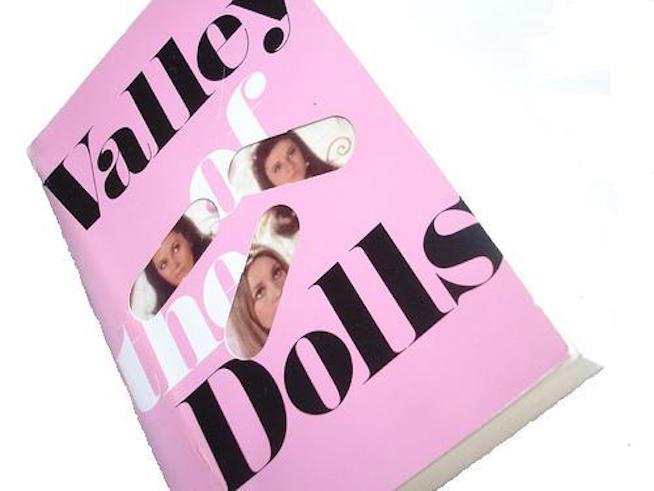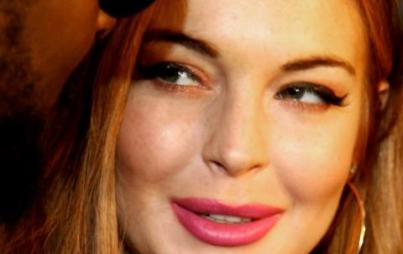
Image: Flickr
Don’t worry, it’s not just the heterosexuals having fun. Jennifer (the character based on Marilyn Monroe) has a steamy, three-year affair with a woman who makes her wild.
Ah, fall (aka the season of pumpkin-flavored everything) is upon us! Leaves are changing colors. Football has begun. And it’s safe for us to be outside without SPF 80 zillion.
With the very real threat of El Niño on the horizon, a lady’s got to get savvy on indoor activities, like, now. Reading tends to be one of the best because — unlike, say, doing a puzzle — everyone will leave you alone while you do it (which is what you’ll need when you’re stuck inside with the same people day in and out).
Why not step outside your literary comfort zone this season with a throwback novel: Valley Of The Dolls, by Jacqueline Susann? The novel, written in 1966, follows the drug-addled lives and careers of three women in showbiz from 1945 to 1965. (“Dolls” is code for drugs, aren’t they soooo clever?) The women are (loosely) based on Judy Garland, Marilyn Monroe, and Jacqueline Susann herself, so you know there’s gonna be some scandal. In fact, it’s packed with enough sex, drugs, gossip, and tantrums to make even Perez Hilton raise an eyebrow. Its juiciness was so delectable that Valley Of The Dolls spent considerable time in The Guinness Book Of World Records as the best-selling novel of all time. (Fun fact: The Guinness Book of World Records itself surpassed Valley Of The Dolls sales in the '70s.)
Despite its campy reputation, Valley Of The Dolls is surprisingly feminist for the era. Let’s dish on its finer points, shall we?
1. The Main Character (Mostly) Shuns Marriage
Anne Wells (the character based on the author) really has it made in her hometown, Lawrenceville. She’s ridiculously wealthy. A nice boy wants to marry her. Unlike approximately 63% of her lady peers, Anne is also college educated. The woman could have bought a home, popped out a few kids with her man, and called it a day.
Instead, she runs away to live in New York, where she takes a crummy job as a secretary for a law firm that specializes in handling actors (meaning: She gets paid very little, and never has free time). A few weeks in, a wealthy man named Allen comes to sweep her off her feet. He drags her all across New York to glamorous clubs and introduces her to what must have been the Kardashians of the time. When he proposes to her (with a diamond ring the size of her entire apartment), Anne refuses. She doesn’t love him. Other love interests later try to persuade her to leave New York or marry, and Anne still isn’t interested. Though she carries a torch for an emotionally unavailable man for most of the story, Anne refuses to give into his immature whims.
2. OMG! Women Actually Orgasm In This Book (And There’s A Lesbian Side Plot)
When God in her almighty strength crafted the female, she (that’s right, I said “she”) bestowed upon us a fabulous organ designed solely for sexual pleasure, yet men pretended it didn’t exist for years.
Susann, in all her amazingness, sure didn’t forget. Better yet, she made it seem normal.
“[Anne] responded eagerly to his lovemaking. On the second night she fell back, shaking and weak. He held her gently and stroked her hair.
‘Oh, Lyon — it happened.’ She shivered a little.
‘For the first time,’ he said.
‘I was beginning to worry about myself.’
‘Not at all — it’s very rare for a girl to actually feel anything or reach a climax in the beginning.’” (Page 155, 1997 Edition)
Did you catch that? “In the beginning.” It’s unusual for a woman to orgasm the first few times she has sex — not forever.
Don’t worry, it’s not just the heterosexuals having fun. Jennifer (the character based on Marilyn Monroe) has a steamy, three-year affair with a woman who makes her wild. Maria, her more experienced lover, explains: “I want to make you know about sex, to feel thrilling climaxes.” (Page 174)
While theses ladies lost their minds to their skilled lovers, it was also acknowledged that anal sex was no fun. Jennifer, in pain, ground her teeth while her new husband “tore into her.” (Page 204)
3. The Crumbling Facade Of Masculinity Is Openly Discussed
About a year ago, a pair of drunk, middle-aged (yet fabulous) women took to me while I watched the World Series at a bar with my date. They pulled me aside and said something I’ll never forget:
“Men are afraid of women. Don’t buy their patronizing, misogynist bullshit. They’re just trying to disguise this fear.”
The same concept is explored in Valley Of The Dolls. While sexism is widely discussed throughout the plot, it is often paired with an understanding that men feel powerless next to women. When Neely (the character based on Judy Garland) rises to an esteemed level of fame, men fear her. (Real talk: Her personality might have driven them away as well.) She spends much of the novel lonely and craving love. Anne, using her personal money, makes an investment for her husband. Upon discovering this transaction, her husband accuses her of running his life and promptly begins an affair with her best friend. Anne seeks her (male) mentor to discuss the matter. He explains that Anne made her husband feel small, and he now seeks the arms of a woman who makes him feel grand.
And there we have it: A gossipy, fun read that sheds light on feminist concerns of the era. It’s as if Gossip Girl grew up.




